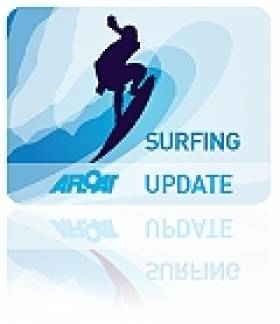Displaying items by tag: Charles McQuillan
Up Close and Personal with NI Big Wave Surfer Al Mennie
#SURFING - Top press photographer Charles McQuillan recently travelled to Northern Ireland to capture big wave surfing pro Al Mennie in training for the winter season, as The Irish Times reports.
McQuillan set out to document every aspect of Mennie's surfing life on the north Antrim coast, from the pre-dawn starts and protein-heavy breakfasts to the gruelling solo training sessions and the thrill of the surf itself.
And he made sure to get up close and personal with his subject, using waterproofing equipment to photograph him underwater - and even following him on a jet-ski to the secret offshore surfing spots known only to Mennie and his fellow big wavers.
The snapper described the surfer as "incredibly at home" in the water. Not surprising for a man used to taking on the enormous Finn McCool swells off the Giant's Causeway, or paddling across the North Channel for charity as he did this past spring (see more pics of Mennie surfing HERE).
As Mennie tells the Belfast Telegraph, he has the good fortune to be able to ride “the biggest, scariest waves on the planet” in his own backyard.
It comes at a price - Mennie must be in peak physical condition at all times, as one never knows when the big one might come - but it's a price he's more than willing to pay, with his body and his mind.
“Big-wave surfing is at least 80 per cent to do with your mind, and the physical aspect boosts the mental side," he tells The Irish Times. "I don’t feel 100 per cent in myself unless I’m training properly.”
Meanwhile, The Irish Times also highlights the best places to get your wetsuit on and go surfing in Ireland during the increasingly popular winter season, with schools in the hotspots of Lahinch in Co Clare - the focus of a new book by journalist Keith Duggan - and Bundoran, Co Donegal upgrading to meet the demand.
And even if its waves aren't up to scratch, the east coast still is getting some of the action, with stand-up paddleboarding (SUP) becoming the latest way to ease into the sport.





























































